Romancing Taiping (I)
0Romancing Taiping (Part 1)
A photo essay by Simone Lee
“I was a little apprehensive at the beginning. Even as a Malaysian, I’ve never heard of anyone raving about a visit to Taiping. But while we were there, I fell in love…………” Simone Lee (Brownie*)
Taiping History (in brief)
Plagued by fierce feuds ( The Larut Wars) between 2 prominent Chinese secret societies(Ghee Hin and Hai San, this once flourishing town in Perak, which prospered from tin mining was said to have been named Taiping – 太 (tai – ‘great’) and 平 (ping – ‘peace’) – after a truce was brokered in the Pangkor Treaty. The treaty was the result of a politically motivated call for British intervention aided by a friend from Singapore, Tan Kim Ching (son of Tan Tock Seng).
Day 1: Taiping Town and Kuala Sepetang
At the sleepy town, we met our guide, Ah Kew (Lee Eng Kew), a freelance writer and field historian. Our first stop: The Old House Museum. One of the earliest 3-storey shophouses built in Taiping, the museum/antique shop retains much of its original architecture.
(please click on images for full size photos and captions)
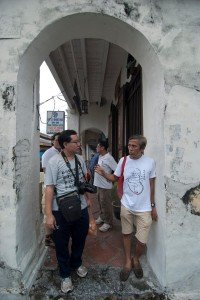
Our very knowledgeable and generous guide Ah Kew (pictured on the right) , who was to share with us personal insights into Taiping’s history and cultural links (photo Simone Lee)
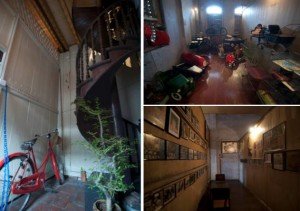
Clockwise from left): – 1) Much of the shophouse, including the wooden spiral stairs are retained 2) A room filled with miniature cars and dolls – 3) Posters of artists and celebrities from the 60’s and 70’s line the corridor (photos Simone Lee)
Charcoal Factory
The next stop surprised everyone. As we drove into the compound of a charcoal factory, the scene took our breath away. The smoke from the kilns filters the sun rays, reminding me of movies with scenes of a dreamy, foggy mornings by the lake, embraced by mountains.
Here, Ah Kew explained the charcoal making process which typically takes several weeks before it is ready to be marketed. In the process, a by-product “‘charcoal water” is distilled from the baking wood. It is bottled and sold as a beauty product – slightly acidic but gentle enough to be used on the skin. I tried some on my face and arms, and instantly my skin felt supple, toned and smooth! Feeling vain, I wanted to order a bottle, which was selling at just RM5, the retail outlet was closed.
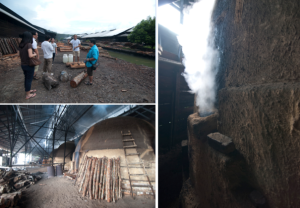
(clockwise from top-left): – 1) Ah Kew explains how logs from the mangrove trees are brought to the factories by boat via the stream.2) Steam from the kiln gushes out as the wood is baked so moisture, evaporates. 3) The igloo-shaped kilns in one of the factories (photos Simone Lee)
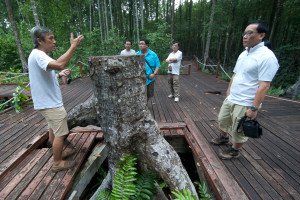
Kuala Sepetang’s Matang Mangrove Forest is the largest mangrove forest reserve in Malaysia and was gazetted as a Permanent Forest Reserve in 1906. (photo Simone Lee)
At the mangrove forest, Ah Kew regaled us with stories of 2 notorious pirates with fearsome reputations in the post war era.
Tan Lian Lay once hid bags of rice in a mangrove forest but they were destroyed when the tide rose. After his death, he was immortalised as a deity because his spirit was giving out winning numbers in repentance for his sins. It has been said Tan Lian Lay was also a trouble maker in Singapore. When he was killed in Bagan Api in Riau, Sumatra, a well- wisher from Singapore sent gifts as a reward for slaying Tan Lian Lay’s reign of terror.
Tan Hua Siea aka Raja Laut (King of the Sea) monopolized the shellfish farms and was on Perak’s most wanted criminal list. Despite that, he eluded capture, sheltered by the locals. Even though he was always dangerously armed, he never terrorised the villagers and was revered as the Robin Hood of the coast. What happened to him remains a mystery to this day.
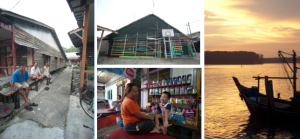
The idyllic village belies its checkered sometimes violent past as hideouts for pirates. (photos Simone Lee)
***
Look out for Romancing Taiping Part II next week
***
*The Brownies’ yearning to connect to history and thirst for adventure, brings them to various locations within and beyond Singapore. The objectives of these retreats are, to study the historical and cultural links to Singapore, and to strengthen kinship amongst the brownies.
(Brownies are the volunteers who conduct regular weekend guided walks and independent research on heritage, habitat and history of Bukit Brown Cemetery.)
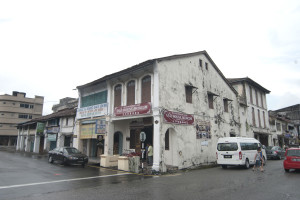



Comments